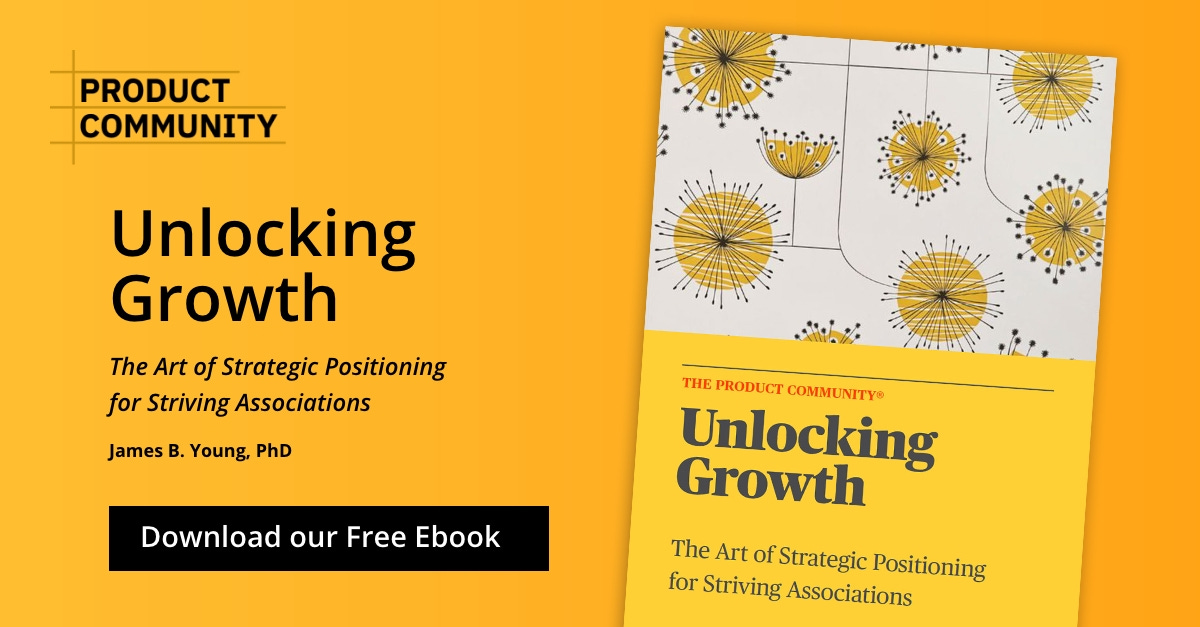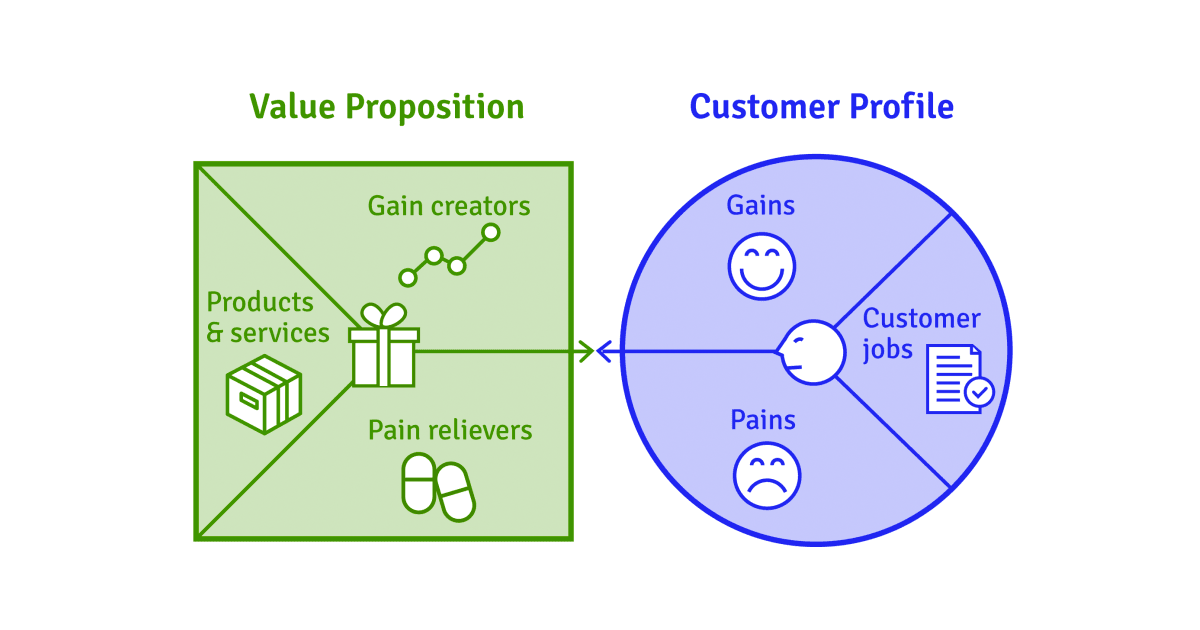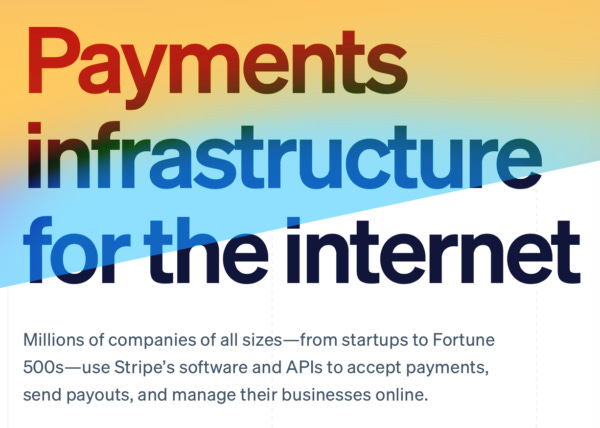What is Your Secret Sauce? [Book Excerpt]
Set Your Association Apart by Developing a World Class Value Proposition
Summary
“Secret sauce is an element, quality, ability, or practice that makes something or someone successful or distinctive.”
Merriam-Webster Dictionary
[This article is an excerpt of my ebook, which you can download and read for free: Unlocking Growth: The Art of Strategic Positioning for Striving Associations].
What distinguishes your association? Why should prospective members choose you over other options in the market? A value proposition is a promise of value to an association’s customer or member. It is much more than a marketing tagline.
Great value propositions reflect the “why” and “how” of an association’s pitch for belonging. Why should I invest time and money into your association? And how will your association solve my particular problems and improve my life?
Value propositions are powerful as they distill our member’s wants, needs, or pains and provide powerful insight into the value our members desire (plus how we should go about creating and delivering it).
Building off the last chapter, in which we highlighted the importance of differentiation, value propositions are so important that associations need an overarching one as well as one for each product or experience.
A value proposition describes the customer problem, the solution that addresses the problem, and the value of this solution from the customer's perspective.
The Importance of a Value Proposition
“Whatever you do – whether you’re a janitor or CEO – you can continually look at what you do and ask how it connects to other people, how it connects to your big picture, how it can be an expression of your deepest values.”
Amy Wrzesniewski
A value proposition is crucial for associations because it answers the questions: “how are we unique?” and “what is our promise of value to our customers?”
It is a vital component to sound association positioning. The value proposition is the association's "special sauce" that sets it apart and explains why individuals should not just join, but engage meaningfully. Here's why having a value proposition is important:
Attracting Members: With so many associations and organizations available, a clear value proposition helps grab the attention of potential members. It tells them what they will gain from joining and why it's worth their time and money.
Retaining Members: A value proposition isn't just about attracting new members; it's also about keeping existing ones. When members feel that we offer unique and tangible benefits, they are more likely to stay engaged.
Building Trust and Credibility: A strong value proposition demonstrates our expertise and commitment to member needs. This builds trust and credibility, as a reliable authority and source of support and resources.
Guiding Decision-Making: Having a clear value proposition helps us make strategic decisions that align with our core objectives. It acts as a compass, guiding our actions and priorities.
Fostering Engagement: Knowing the specific advantages of being a member encourages individuals to actively participate in association activities, events, and discussions.
Competitive Advantage: In a competitive landscape, a compelling value proposition gives us an edge over rival associations. It showcases what makes us unique and why we’re the best choice for potential members.
Resource Allocation: Associations often have limited resources. A value proposition helps direct those resources to areas that bring the most value to members.
Collaboration and Networking: A clear value proposition attracts like-minded professionals, creating a strong network where members can collaborate, share knowledge, and enhance their professional growth.
Advocacy and Influence: A well-defined value proposition can help us gain influence in the industry or profession we represent. This can lead to advocacy efforts and the ability to make a positive impact.
Long-term Sustainability: A value proposition is crucial for long-term success. By consistently delivering on our promises, we can maintain our reputation and continue to attract and retain members.
A value proposition is the foundation for our growth, success, and impact. It communicates the value of joining, engaging, and participating, differentiates us from others, helping us fulfill the needs and expectations of our community. Before we look at how to create one, let’s look at an empathy map.
Empathy maps build on baseline customer understanding (as reflected in a persona or archetype) and forces us to put ourselves in the shoes of the member: to consider how they think, feel, see, hear, say, and do. Empathy maps are about getting inside the head of the member.
The empathy map can be used to understand and build relationships with current or prospective customers. It can also help to identify fears, concerns, wants, or needs.
The Value Proposition Canvas
“Don’t be the best. Be the only.”
Kevin Kelly
The most well-known approach to creating a value proposition is the Value Proposition Canvas created by Strategyzer. It utilizes a customer profile and a corresponding value map. Here is what it looks like:
Here is a breakdown of each part of the Value Proposition Canvas, broken into two sections: the customer profile (denoted above in blue) and the value map (labeled in green above as value proposition).
Customer Profile
Customer Jobs — What jobs are our customers trying to accomplish? These are functional, social, or emotional.
Pains — What are the potential bad outcomes of the customer job? What risks are associated with the jobs and what obstacles prevent customers from performing them?
Gains — What outcomes do our customers want to achieve, or what concrete benefits are they seeking from performing their jobs?
Value Map
Products & Services — Around what product or service is our value proposition built? What unique attributes does our product have?
Pain Relievers — How does our product reduce or eliminate customer pain?
Gain Creators — How does our product or service help our customers achieve their desired gains? How does it boost the final benefit they get?
Once the value proposition canvas is complete, we can prioritize the most important and least important jobs, pains, gains, attributes, relievers, and gain creators. Here is what a completed value proposition canvas looks like:
As we can’t satisfy all customer needs, we need to focus. What customer jobs do we want to target? What pains and gains are most critical for these jobs?
With a prioritized customer profile, we can refine our value map, eliminating everything that doesn’t target the gain and pains we have just defined.
This way, we build a specific value proposition that targets particular problems rather than trying to satisfy everything. As one can see from this graphic, there are myriad benefits to building a value proposition.
We will now transition to a tool that will guide associations on their journey to growth. It is called the Growth Readiness Framework. [download my ebook, Unlocking Growth, to learn more].
A Few Examples
“You rush a miracle man, you get rotten miracles.”
Miracle Max from the Princess Bride
Though they can be expressed through short, public-facing marketing taglines, most value propositions are longer, internal documents that serve as an architecture for identity and strategy focus. Here are a few non-association examples, courtesy of Constant Contact:
Grammarly’s value proposition stands out for its simplicity and clarity.
Similarly, Stripe’s value proposition uses boldness, clarity, and reach to differentiate itself form the competition.
Creating a value proposition that pops can be a big effort. It takes focused inclusion, courage, and crisp decision-making. To get the greatest return, it’s best to refrain from compromise or groupthink common to shared governance. This can be tricky in associations so it can be beneficial to include independent voices or an outside consultant to facilitate results.
Ways To Engage
“The only thing worse than being blind is having sight and no vision.”
Helen Keller
Thank you for subscribing, supporting, and reading the product community newsletter!
The product community is a new concept in the world of associations. We are a community in the purest sense: fun, idea-oriented, engaging, and designed as a peer learning community in which participants learn how to leverage existing, underutilized content or programming in order to create new products.
I enjoy writing this newsletter each week and love the community we’re building. There additional ways to engage in the product community.
Association Design Circle — Free first Friday networking coffee with association innovators.
Workshops — Two-hour to half-day workshops on practical topics like growth, productization, and revenue diversification.
Association Product Incubator — Bring a core idea, leave with a detailed roadmap and go to market strategy.
Community Cohort — Build exciting programs + products that engage your community + grow revenue. New cohorts are offered every January, May, and September.
Tailored Cohort — Similar to the community cohort, but tailored for your particular association. Learn to leverage existing value, create new products, and transform your culture in the process.
Thank you! Let’s stay in touch.
About the Author
James Young is founder and chief learning officer of the product community®. Jim is an engaging trainer and leading thinker in the worlds of associations, learning communities, and product development. Prior to starting the product community®, Jim served as Chief Learning Officer at both the American College of Chest Physicians and the Society of College and University Planning.
Please contact me for a conversation: james@productcommunity.us.











